| 2001 QUEENSLAND TERM POSTCARDS
LAMINGTON NATIONAL PARK DAY 1: SEPTEMBER 15
| INDEX |
PREV
| NEXT
|
 LAMINGTON NATIONAL PARK DAY 1: The second extended field trip was to
Lamington National Park. The day started early, loading the bus at 7:30 am.
LAMINGTON NATIONAL PARK DAY 1: The second extended field trip was to
Lamington National Park. The day started early, loading the bus at 7:30 am.
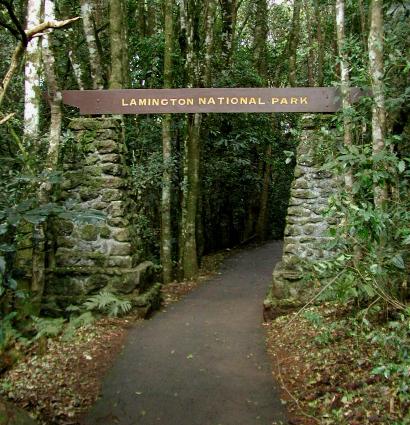 Lamington National Park is one of the best known national parks in all of
Queensland and it is one of the most heavily visited. It has served as a
back drop for television programs such as the "Nature" series. Lamington covers
over 20,000 ha and has World Heritage status.
Lamington National Park is one of the best known national parks in all of
Queensland and it is one of the most heavily visited. It has served as a
back drop for television programs such as the "Nature" series. Lamington covers
over 20,000 ha and has World Heritage status.
There are two sections (entrances)
to Lamington National Park: the Green Mountains section
which we visited and the Binna Burra section. There are over 150 km of well-maintained
trails throughout the park making it is possible to hike between the two sections.
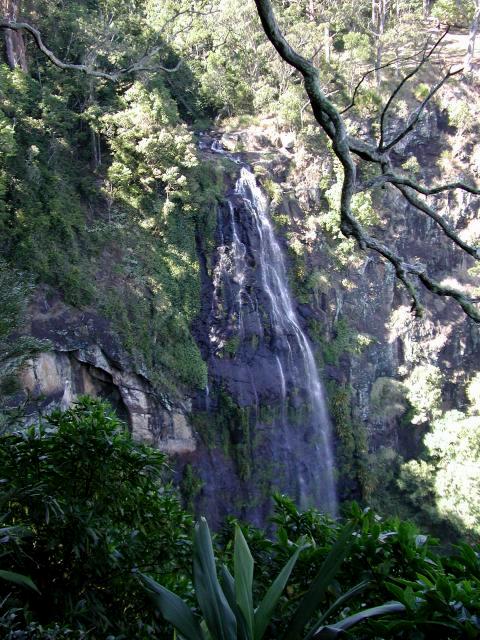
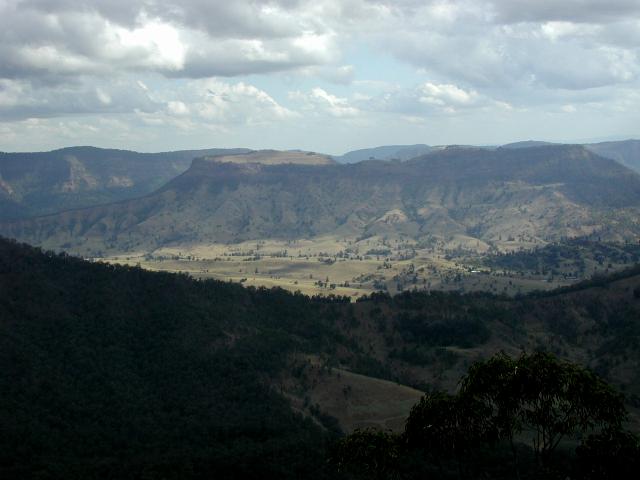
The park is located about two hours south of Brisbane by
bus. The valleys and peaks of Lamington are home to two types of
rainforest: the warm subtropical rainforest common in coastal areas of
Queensland and remnants of the cooler subtropical rainforest that
blanketed Australia when it was still part of Gondwana millions of
years ago.
Lamington forms part of a huge shield volcano that originally was centered at
Mt Warning in northern New South Wales. Erosion of the softer volcanic rocks has
resulted in a rugged terrain with a high plateau cut by many gorges and waterfalls.
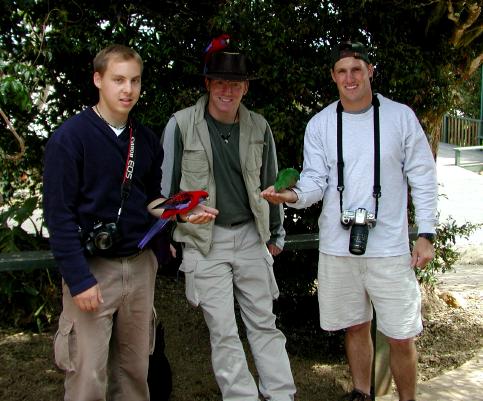
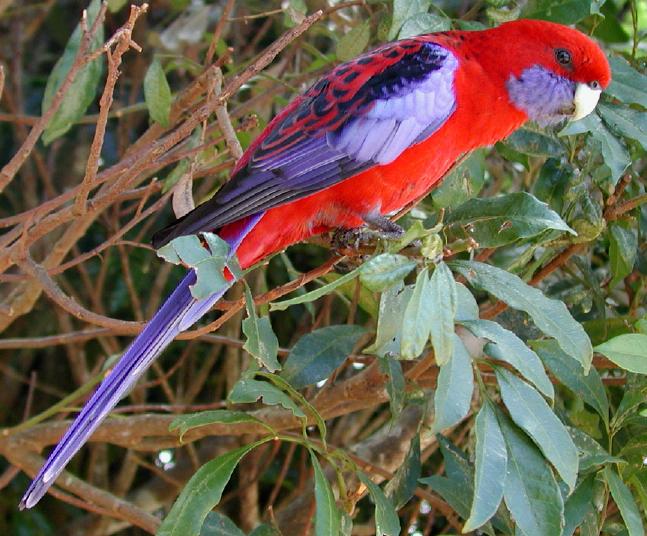
Rainforest birds are a main feature of the park. Those around the guest house and
campsites of the parks are relatively tame.
Platycercus elgans, "Crimson Rosella"
Phylum: Chordata
Class: Aves
Family: Platycercidae
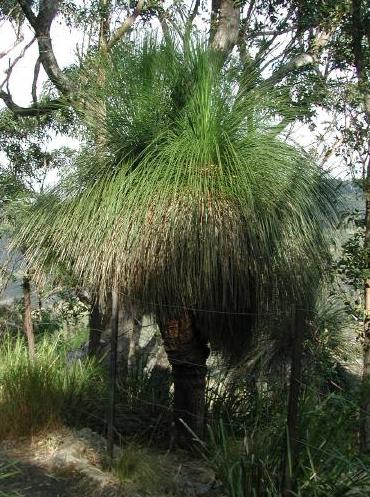
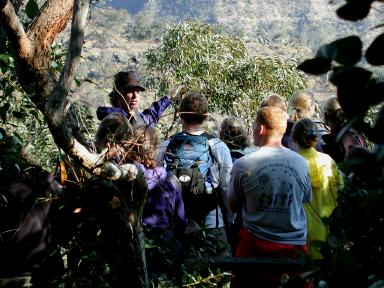
Xanthorrhoea johnsonii, "Grass Trees"
Family: Xanthorrhoeaceae
Grass trees were present at Lamington, as they had been at
Stradbroke Island.
This species is not only
resistant to fire but is actually stimulated to flower by it.
According to the
Australian
National Botanic Gardens, the Aboriginal
peoples of Australia used grass trees as a food source.
"The bases of the leaves are sweet and nutty, and the heart of the stem was also eaten. Nectar was
collected from the tall spike of flowers with a sponge made of stringybark. The dry flower-stems
this species were used to make fire. At the base of the plant globules of a hard waterproof resin
were collected, which served as a cement to fasten barbs in spears or stone axes to handles."
Mike Pole discusses the geologic history and fire history of the Python Rock section of
the park and how it this history is revealed in the surrounding vegetation.
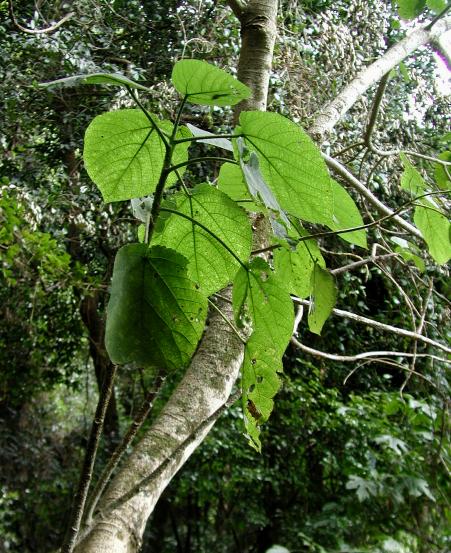
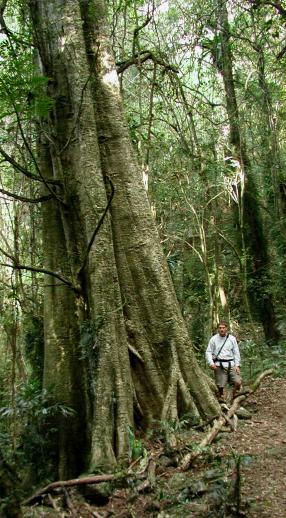
Dendrocnide excelsa, "Giant Stinging Tree
Division: Magnoliophyta
Class: Magnoliopsida
Family: Urticaceae
The common name for this tree is derived from the fact that it has
silica barbs on the leaves which carry a toxin that can continue to "sting" for more than
a month after first contact.
The photos above show the leaves from a young tree and a much older Giant Stinging Tree.
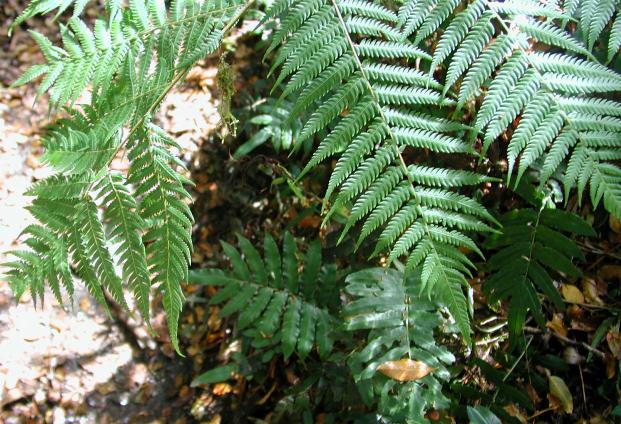
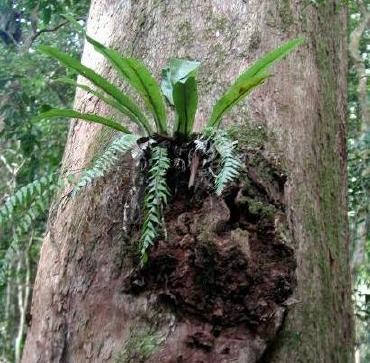
Left: Many rainforest trees have epiphytes growing on them, such as this Crow's Nest Fern.
Above: Two different ferns growing at the edge of one of the walking tracks at the park.
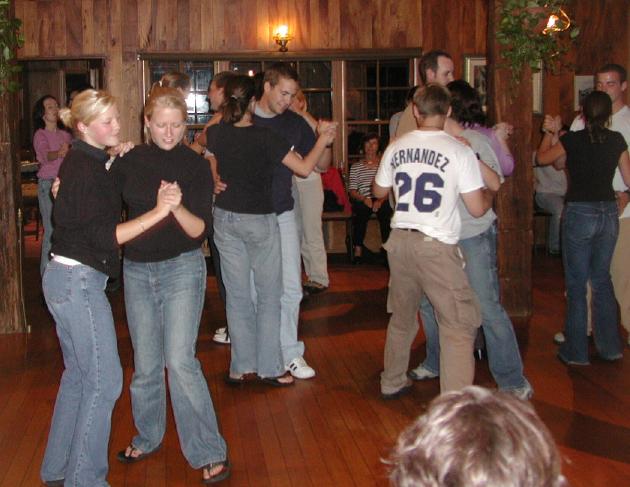
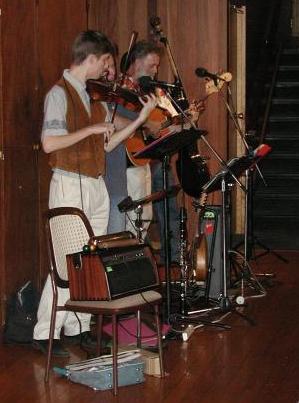
Saturday night was time for the "Bush Dance" at the Guest House.
Hobart & William Smith Colleges and Union College
Partnership for Global
Education: Queensland Term 2001
 Lamington National Park is one of the best known national parks in all of
Queensland and it is one of the most heavily visited. It has served as a
back drop for television programs such as the "Nature" series. Lamington covers
over 20,000 ha and has World Heritage status.
Lamington National Park is one of the best known national parks in all of
Queensland and it is one of the most heavily visited. It has served as a
back drop for television programs such as the "Nature" series. Lamington covers
over 20,000 ha and has World Heritage status. LAMINGTON NATIONAL PARK DAY 1: The second extended field trip was to
Lamington National Park. The day started early, loading the bus at 7:30 am.
LAMINGTON NATIONAL PARK DAY 1: The second extended field trip was to
Lamington National Park. The day started early, loading the bus at 7:30 am.










